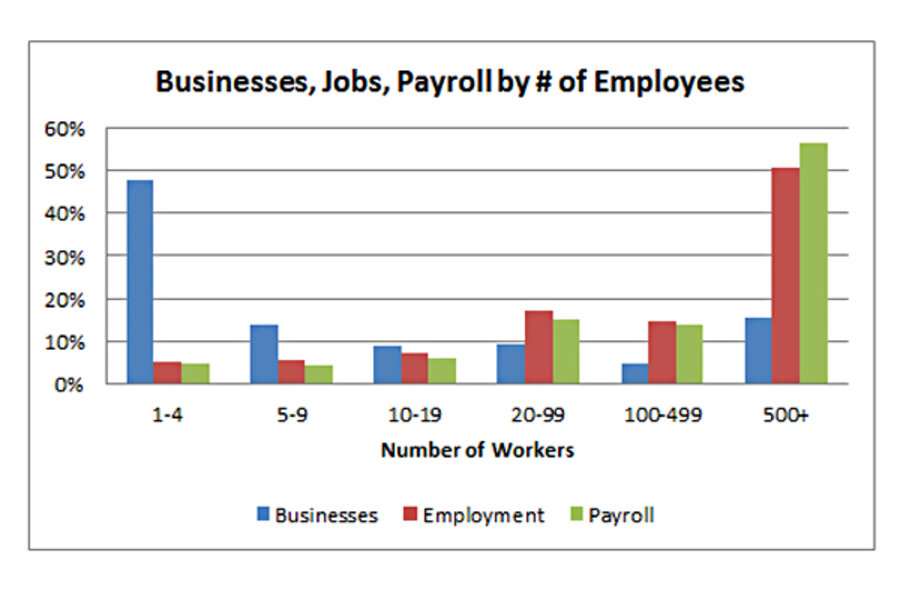The most commonly misunderstood fact about the job market
Loading...
I was listening to the Diane Rehm show today when the guy from the small business lobby (NFIB) was asked whether most workers were employed by small firms. He misleadingly said they did.
This is widely misunderstood, but the fact is that most businesses are small, but most employees work in large firms (the figure below focuses on “establishments” rather than firms—the former is a single physical place of business; firms can incorporate numerous establishments; the main result is insensitive to this difference).
The above figure shows that most businesses employ few workers. Just about 50% employ four or fewer workers, and 80% of businesses employ fewer than 100 workers.
But as the second bar in each group—number of employees—shows, about half of all employees work in firms of 500 or more workers and two-thirds work in firms of at least 100 workers.
Payroll (total compensation) is even more skewed: 57% is paid out by firms of 500 or more workers; only 30% of payroll is paid by firms of less than 100 workers.
Nor is it the case that small businesses, per se, are the engine of job growth their advocates claim. Research like this finds that “once we control for firm age there is no systematic relationship between firm size and [job] growth.” As I stress here, that research shows that it’s surviving startups that are particularly important in terms of generating new jobs.
So, summing up, small businesses, say those with 100 workers or less, account for a minority of both workers and payrolls, and are not the primary engine of job growth.
Why then all the favoritism in policy circles, which is especially problematic if you listen to the one-sided agenda of their guy on the Diane Rehm show (e.g., his organization is against extended unemployment benefits because their members allegedly report that recipients won’t take jobs until their benefits run out; Larry Mishel, along with a bunch of folks who called into the show, did a good job of calling him out)?
In part, because they need and deserve help. Larger firms have fewer credit and cash flow challenges, nor do they operate on such tight margins. It’s easier for larger firms to sell into and expand foreign markets, which is especially useful to them right now, as that’s where the growth is.
But the political clout of small businesses and the misrepresentations of folks like the guy on this show are a big problem in our politics. In this regard, small is not beautiful.





